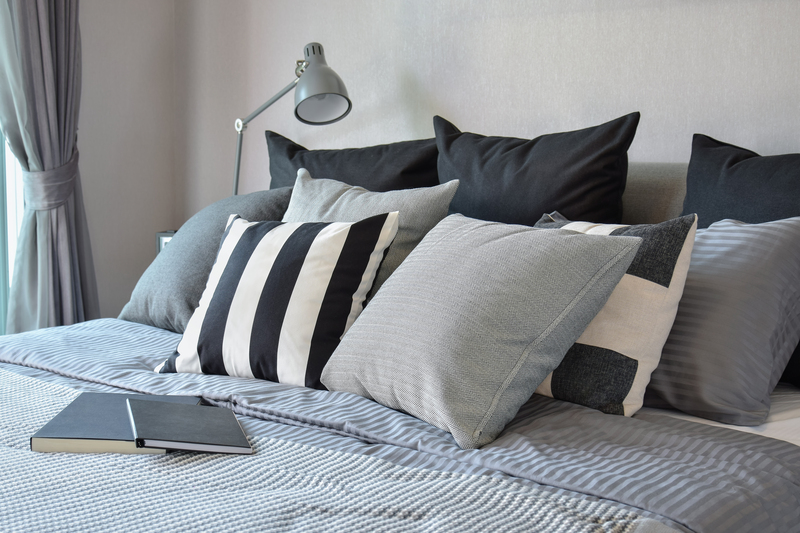Ultimate Guide to Long-Term Clutter Control After Clearing Out
Congratulations! You've taken the first big step and cleared out the clutter from your home or workspace. But what comes next? How can you ensure that the clean, organized environment you've created will actually last? This comprehensive guide will show you everything you need to know about long-term clutter control after a decluttering session. Discover strategies for maintaining a clutter-free space and making sure your hard work pays off for years to come.

Why Clutter Returns: Understanding the Challenge
Many people experience the frustration of seeing clutter slowly creep back in after a massive clean-out. Understanding why this happens is key to preventing clutter from overtaking your life again.
- Lack of New Habits: Clearing out is a short-term solution; it's your daily patterns that determine long-term results.
- Insufficient Systems: Without systems to deal with new items, paperwork, and daily mess, clutter easily accumulates.
- Emotional Attachment: Sometimes we continue accumulating things due to sentimental reasons, shopping habits, or fear of letting go.
- Inefficient Storage: Poor storage makes it easy to pile items up rather than put them away.
Long-term clutter management begins with new ways of thinking--and this guide will show you how.
Setting the Foundation for Sustainable Clutter Control
Visualize Your Ideal Space
Long-term clutter control starts with a vision. What do you want your home or office to feel like? Write down your goals or create a mood board with photos of organized spaces that inspire you. This vision will keep you motivated during daily and weekly maintenance.
Establish Clutter-Free Zones
Designate certain areas as permanently clutter-free--such as your entryway, kitchen counter, or workspace. No matter what, these spaces should remain clear. Encourage everyone in your household to respect these zones.
Create Clear, Practical Storage Solutions
Every item in your space should have an assigned home. Use storage baskets, shelves, and labels to make organization effortless. Remember, simple storage systems are easier to maintain than complex ones.
- Store items where they're used: Keep kitchen utensils in the kitchen, mail by the door, and toiletries in the bathroom.
- Label everything: Labels reduce confusion and encourage everyone to return items to their rightful place.
- Keep storage accessible: If you have to move multiple things to put something away, it's unlikely to stay organized.
Daily Routines for Ongoing Clutter Control
Daily Tidy-Up
Spend 5-10 minutes at the end of each day resetting your main living or working area. This simple habit prevents mess from accumulating and helps you spot potential clutter hotspots quickly.
The "One In, One Out" Rule
Want to avoid ever piling up new clutter? Whenever you bring something new into your space--whether it's clothing, books, or kitchen gadgets--commit to removing something old. This keeps your total possessions in check and supports long-term clutter prevention.
Handle Paperwork Immediately
Papers, bills, schoolwork, and mail are notorious for piling up. Create a habit of handling paper as soon as it comes through the door:
- Sort: Immediately decide whether to recycle, shred, file, or act upon each piece.
- Reduce incoming mail: Opt in for digital statements and unsubscribe from unnecessary paper catalogues.
Weekly and Monthly Maintenance Strategies
Schedule Regular Clutter Audits
Set aside 30 minutes each week (or at least monthly) for a quick audit of your space. Walk through each room and look for items that are out of place, unused, or starting to pile up.
- Pick a day: Linking your "clutter check" to an existing routine, like cleaning day or Sunday reset, makes it easier to stick to.
- Declutter rapidly: Set a timer and focus on removing unnecessary items without overthinking it.
Seasonal Deep Dives
Once every season (four times a year), do a more thorough review:
- Go through closets and donate clothing you haven't worn in months.
- Declutter holiday decorations and seasonal gear.
- Review pantry and medicine cabinets for expired items.
- Reassess hobby or sports equipment.
These deeper sessions prevent gradual buildup and keep your systems functional.
Digitize Where Possible
Digitizing files, photos, and records dramatically reduces paper clutter for the long term. Invest in a reliable scanner or use your smartphone to quickly turn paper into searchable digital formats. Back up digital files regularly for peace of mind.
Tackling Common Clutter Magnets
Clothes and Closets
Wardrobes tend to accumulate items quickly. For long-term closet organization:
- Reverse hanger method: Hang clothes backwards; at the end of the season, anything not flipped is ready to donate.
- Use drawer dividers: Keep socks, underwear, and accessories organized.
- Store off-season garments out of sight: This frees up space and keeps your closet from feeling packed.
Entryways & Drop Zones
These areas see the most daily traffic and are prone to mess. Keep clutter at bay by:
- Using hooks for keys, bags, and jackets.
- Introducing a small tray or basket for incoming mail.
- Establishing a daily reset for the space.
Kitchens and Counters
Kitchens are busy zones, and surfaces easily fill up with random items. For kitchen clutter control:
- Keep only daily-use appliances and tools on the counter.
- Assign a drawer for "junk" but clean it out each week.
- Rotate pantry and fridge items so nothing gets lost at the back.
Kids' Stuff and Toys
Children's belongings often multiply--quickly. Help kids participate in long-term organization by:
- Using labeled bins or color-coded baskets for toys.
- Implementing a pre-bed tidy-up routine.
- Regularly rotating toys to keep things fresh and manageable.
Sentimental Clutter
Memorabilia and keepsakes can accumulate under the radar. For sustainable control:
- Limit sentimental items to a dedicated box or shelf.
- Digitize letters, cards, and photos whenever possible.
- Take photos of bulky or fragile items before letting them go.
Organizational Tools and Systems for Lasting Results
Invest in Versatile Storage
High-quality baskets, bins, modular shelves, and drawer organizers make a world of difference. Remember that effective clutter control isn't about hiding things but creating a sustainable, functional system for everything you use and love.
Utilize Checklists and Reminders
Printable or digital checklists help keep regular decluttering tasks on your radar. Set recurring calendar reminders for seasonal reviews or weekly mini-tidies.
Declutter Apps and Technology
- Trello or Notion: Organize cleaning tasks, keep inventory lists, or track what you're donating.
- Habit-tracking apps: Build and reinforce your new clutter-control routines.
Mindset Shifts for Permanent Clutter Freedom
Adopt a Minimalist Mindset
You don't have to become a minimalist, but adopting some of their principles will help with ongoing clutter reduction:
- Buy less, choose more carefully, and enjoy what you have.
- Question impulse buys and gifts--ask if they truly add value to your life.
Change How You Shop and Accumulate
Many clutter issues can be traced to easy accumulation. Before bringing home new items:
- Ask yourself: Do I need this? Do I have space for it? What will I let go of to make room?
- Keep a "maybe list"--wait a few days before purchasing to see if you really want or need it.
Involve Everyone in Your Household
Long-term clutter management works only if all family members or housemates participate. Assign age-appropriate tasks, create shared routines, and explain the "why" behind your systems.
Addressing Setbacks and Staying Motivated
Recognize When You're Slipping
Everyone encounters backslides now and then. The key is to recognize the early signs:
- You start leaving things out for "just a day."
- Certain surfaces or areas start accumulating piles again.
- You feel frustrated or overwhelmed by stuff.
If this happens, recommit to your routines and do a mini reset.
Celebrate Progress, Not Perfection
No home is perfectly tidy all the time. Long-term clutter control is about progress and consistency, not an Instagram-worthy house 24/7. Celebrate small wins--like keeping the kitchen counter clear for a whole week--or doing a successful donation drop-off.
Seek Community Inspiration
Join online groups or follow accounts devoted to decluttering and organization. Sharing challenges and victories with others provides motivation, fresh ideas, and continued encouragement.

Frequently Asked Questions About Long-Term Clutter Control
How do I motivate myself to keep things organized long-term?
Link your routines to rewards and focus on the positive feelings a tidy home brings: less stress, more space, and increased efficiency. Visual reminders, such as photos of your organized areas, can help too.
How can I get my family on board with ongoing clutter control?
Communicate the benefits (more space, easier cleaning, less chaos). Assign specific roles and create family routines. Make clean-up fun for kids--use races, music, or reward charts.
What if I slip back into old habits?
Forgive yourself, identify the cause, and reset. Even organizing pros slip up. The secret is regular maintenance and never letting clutter get out of control before acting.
Conclusion: Mastering Lifetime Clutter Management
Decluttering your home is an incredible achievement, but lasting clutter control is a lifestyle, not a one-time project. By setting up easy systems, following simple routines, and developing the right mindset, you can enjoy a peaceful, organized space for the long haul. Empower yourself and your family to maintain this freedom from clutter and reclaim time, energy, and peace of mind for what really matters.
Ready to keep clutter away forever? Bookmark this Ultimate Guide and revisit it whenever you need a boost or a strategy refresh. Your organized, clutter-free life really does start now!